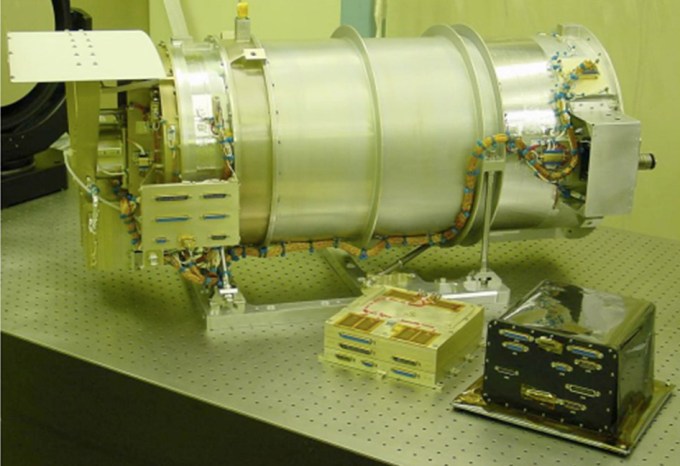BikeTag Is A Smart Safety Sensor For Cycling

Hardware startup Tagit Labs is building a tracking and safety device for extreme sports, focused initially on cycling. Co-founder John Anthony is a competitive cyclist himself, so knows a thing or two about being knocked off his bike.
The startup, which was founded a year ago, has just kicked off pre-orders for its forthcoming gizmo, BikeTag — which Anthony calls a “smart safety” tag — with the aim of shipping the first units to buyers in early September. RRP will be $100 for the basic device (which will include auto-tracking and crash detection features). Additional features will cost more — via a premium subscription service.
While it’s true there are scores of GPS trackers for fitness and sports already on the market, the aim with BikeTag is to supplement other trackers with cycling-specific features (such as event-based alerts, like ‘end of ride’ or crash alerts), and by interoperating with other tracking services. Anthony notes the BikeTag can be set to auto upload workouts to Strava, for instance.
It’s also aiming to stand out in the space by building a robust, safety-oriented tag which requires little agency for continued operation — meaning riders don’t have to think about enabling it before each ride or switching on specific safety features. Once it’s set up, they just get on their bike and go.
“While I got more into cycling, for fitness/competitive reasons and as a means of commuting to my office, it became clear that there was a gap in the overall safety space for bicyclists. Specifically, there were no products that seamlessly (and automatically) give the rider and the rider’s closest family members or friends the peace of mind that they are ok while riding,” he tells TechCrunch.
You can compare this thinking to the trajectory of connected home devices — taking smart lightbulbs as the first-gen example, which afford user control over in home lighting conditions lightbulbs via an app. However, as more and more devices in the home get connected, having to use an app to control every thing you own clearly does not scale. And more automated operation starts to look essential. (We’re already seeing some of this thinking in startups like Stack, which is making sensor-enabled lightbulbs, for example. The key idea is to find ways to enable the Internet of Things to think for itself.)
Tagit Labs sees this sort of automatic operation as a core differentiator for what it hopes will end up as a range of smart safety tags for different extreme sports. In the first instance, with BikeTag, it’s using a mix of motion sensors, algorithms and iBeacon tech to power a tracker that tracks as soon as the rider pushes off. It also relies on the GPS radio in a rider’s smartphone to reduce battery load.

“To achieve a battery life of greater than a year while simultaneously being 100% automatic, we use motion sensors to understand when the bike is being moved in combination with iBeacon technology to understand when the rider is in proximity of the bike to begin to turn on the BikeTag safety features,” Anthony explains.
“Even when this condition is met, for example, we still don’t turn on all the features at once as this would create unnecessary drain on the BikeTag and user’s smart phone battery. Instead, we use motion algorithms and heuristics to turn on certain features when they’re needed.”
Why does BikeTag need to be separate hardware at all? Couldn’t it just be an app on a rider’s phone if they’re going to need to have that with them anyway? Anthony claims separate tag hardware is needed to reduce battery drain while also enabling more automated operation.
He adds that the particular sensors it’s packing into BikeTag are able to provide more granular crash data than could otherwise be pulled via smartphone sensors — claiming: “We will detect every fall/crash with few or no false positives.”
Very low friction operation is clearly going to become an increasingly key requirement of the Internet of Things as the number of devices proliferates. As is building smart hardware that can operate autonomously in a way that supports what the user wants to do, rather than entirely wresting control out of their hands. Taking the strain without simply taking charge is the necessary balance.
Thus BikeTag does have a companion app where users can access to “fine-grained” controls, specifying with whom they share their ride status, location and crash information, for example. “The user is always in control of who sees what,” adds Anthony.
The team has production units at this stage of the product’s development — and Anthony says it’s in the “final stages of beta testing”.
“All development of the MVP features (auto-tracking, crash detection, crash alerts) are completed. At this point we are working through a punch list of minor fixes to the BikeTag mobile application and incorporating feedback from our testers,” he adds.
Additional work to do before being able to ship to buyers includes finalizing the premium Live Tracking and Ride Alert features. The initial BikeTag will be iOS, but support for Android is in the works, he adds.





































